Channel Chiefs: When, And When Not, To Move Storage To The Cloud
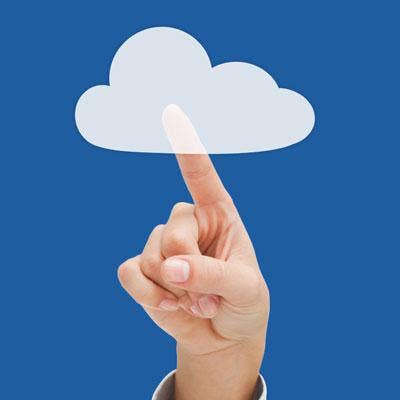
To Cloud, Or Not To Cloud: That Is The Question
The pressure to move data to the cloud, whether to take advantage of perceived cost and flexibility advantages or because it’s supposedly the right thing to do, is ongoing. Research firm Markets and Markets, for instance, expects the global cloud storage market to grow from $18.9 billion in 2015 to $65.4 billion by 2020 for a compound annual growth rate (CAGR) of 28.2 percent.
But should solution providers rush their customers’ data to the cloud, or take a more measured approach? And if data moves to the cloud, how will that impact the traditional storage business of vendors and their channel partners?
To get a closer look at the cloud storage landscape, CRN asked the channel chiefs at five major storage vendors—Hewlett Packard Enterprise, EMC, Dell, NetApp and Pure Storage—how they are working with their channel partners to help them and their customers address data migration to the cloud.
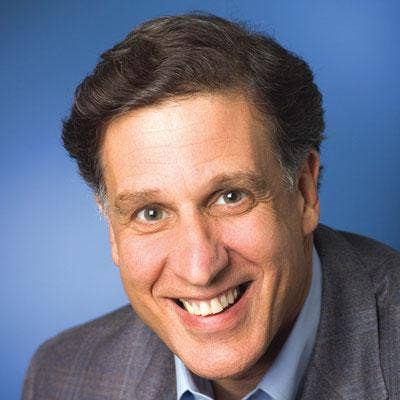
Dell Vice President of Sales and Global Distribution Strategy Frank Vitagliano
Frank Vitagliano is vice president of sales and global distribution at Dell, where he is responsible regional partners and Dell's distribution businesses. Prior to joining Dell in April 2013, Vitagliano held channel leadership roles at Juniper Networks and IBM.
Vitagliano is in a unique position at Dell, a company that until it acquired EqualLogic, a channel-only storage vendor, was considered to be one of the top direct vendors. He is now helping steer Dell's channels through the Dell's planned acquisition of EMC.
Vitagliano, one of CRN's 50 Most Influential Channel Chiefs, is a graduate of Northeastern University.
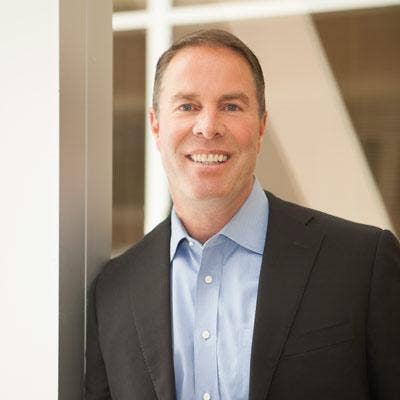
EMC Senior Vice President of Global Channel Sales Gregg Ambulos
Gregg Ambulos has spent 15 years as EMC's senior vice president of global channel sales where he leads the global go-to-market strategy for EMC's channel and distribution partners. In this role, he is also focused on maintaining a consistent channel program across the globe. As the leader of EMC's Global Channel Sales organization, Ambulos oversees EMC's distribution, direct market resellers, and national reseller relationships. He joined EMC in 1997, and is one of CRN's 50 Most Influential Channel Chiefs.
Under Ambulos' leadership, EMC has over time moved from a company with what many considered the most aggressive direct sales force in the IT industry to one that now gets more than 60 percent of its sales from indirect channels. He is now focused on maintaining EMC's channel relationships as Dell plans to acquire EMC.
Ambulos holds a degree in business administration and management from Central Connecticut State University.

HPE Enterprise Group Vice President, AMS Channel Jeremiah Jenson
Jeremiah Jenson has spent the last nearly two years at HPE, and formerly HP, managing the Americas channels. In this role, Jenson is key in defining and driving the strategy for HPE's Americas organization. He is responsible for channel sales in the U.S., Canada and Latin America.
Jenson is a longtime HPE employee, starting at HP as a national account manager in 2001.
Jenson holds a degree in business administration from the University of Northern Colorado.

NetApp Vice President of Global Channels Bill Lipsin
Bill Lipsin joined NetApp as vice president of global channels in May 2015 after leading several years of global channel management at Brocade and CA Technologies. One of CRN's 50 Most Influential Channel Chiefs, Lipsin has more than 30 years of industry experience with vendors, system integrators and solution providers.
At NetApp, Lipsin oversees the channel program of a company in flux as it responds to a storage industry that is facing a rapid move from legacy technology to potentially disruptive technologies such as all-flash storage and software-defined storage, as well as its own shift from its older 7-Mode operating system to its modern Ontap 9. The company over the past year has responded with a multiyear channel strategy that encompasses the changing customer needs for data management and the partners' evolving business models.
Lipsin holds a degree in Business Administration and Management from the University of British Columbia in Vancouver, Canada.

Pure Storage Vice President of Global Channels and Alliances Michael Sotnick
Michael Sotnick, vice president of global channels and alliances at Pure Storage, leads the channel team at a relatively young storage vendor that is trying to shake up the industry with channel-only sales of all-flash storage technology.
Prior to joining Pure Storage in March 2015, Sotnick spent time managing channels for a number of vendors, including Moovweb, SAP America, ActivIdentity, Quest Software, and Dell after Dell acquired Quest. His channel chops were molded during the 10-plus years he spent at Veritas Software before that company was acquired by Symantec.
Sotnick is a business graduate of the University of Hartford in Connecticut.

CRN: There is clearly a play for putting your storage in the cloud, but is that always the right answer? What should partners be thinking about that? Should they do more or less of it? Let the customer decide?
NetApp's Lipsin: It might be the right decision at a point of time, but it may not be the right decision long term. The cost of storing data on the cloud may be prohibitive compared to using a hybrid cloud model. That’s one of the premises I have. The second thing is you want to control your data. You want to own that and make sure that you can move it where you want it at any point in time. That might stimulate some conversation right there.
I think you have to understand the cost. The right form factor, the right cost factor, for storage. Some information you don’t use very often. Put that somewhere where it’s less costly than putting it on the cloud, where you may need it more expeditiously.
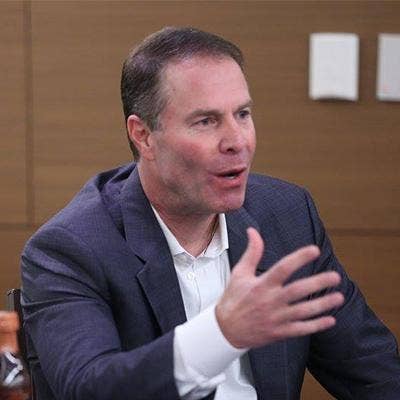
EMC's Ambulos: [EMC Chairman Joe Tucci talks] about the three trends he sees in the industry: mobility, the digital transformation, and enterprises moving to the hybrid cloud. [To meet these requirements], we have native hybrid cloud. It’s based on Cloud Foundry. It’s development apps. In the cloud, we have Virtustream. We have vCloud Air, and we also work with the Amazons, the [Microsoft] Azures of the world. We’re trying to find choice. I think in today’s [fast-moving] environment ... you need choice. You’ve got to understand where is it efficient to move applications and workloads off-prem, and where do you want to keep them on-prem.

HPE's Jenson: I think it’s very clear that consumption models are changing. Customers want simplicity, and they want simplicity without compromise. Our point of view around storage is that it’s no longer OK to have multiple competing infrastructures. You need to have a strategy that is consistent and delivers the right workload on the right platform at the right time. Whether that’s cloud, or whether that’s software-defined, we feel we offer a solution that enables the right customer outcome and a fantastic opportunity for our partners to lead that conversation.
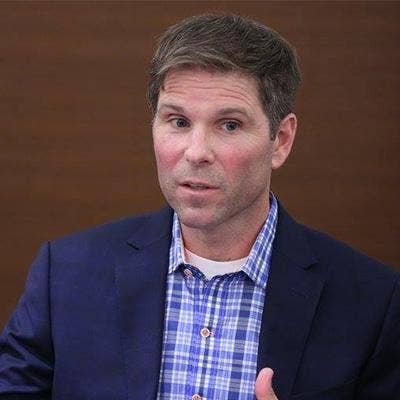
Pure Storage's Sotnick: Our most successful partners really embrace two things: one, all-flash data center, and two, a recognition that their customers are in large part in this race to the cloud and really understanding how the cloud can be a strategic element to their customer’s business. [IDC says that] between now and 2019, we’re looking about a $126 billion cloud IT spend, a third of which is expected to be in storage.
When you double-click on that storage breakdown, about half of that is on-premise IT. There’s, I think it’s about, 23 percent -- 14 percent hosted, 9 percent on-premise -- for private cloud, and SaaS and consumer cloud at 16 percent, and then enterprise Infrastructure-as-a-Service making up the rest at 12 percent. What our best partners are doing, our strongest partners are doing, and I think as a blueprint for other partners to follow, is really helping their customers identify which workloads are going to be managed in the right way, but also speak to the business in the terms of cloud and really help them understand that the tipping point for flash is way, way behind us.

Dell's Vitagliano: What’s been happening, and this is pretty consistent with the entire cloud story for the past four or five years, is that as it evolves, you start to realize that there isn’t one simple answer. What seemed to make sense three or four years ago, in many cases because it might have been all that was available, now no longer makes sense as more and more technology becomes available as vendors and solution providers get a little smarter, both [in] where they want to do things. The point that Bill [Lipsin] made about the different types of data, the way it needs to be accessed, workloads, et cetera, that plays a huge role in it.
I think it’s part of what we've been talking about almost consistently now for four or five years, which is this is continually evolving. It’s not just evolving from a business model standpoint. It’s evolving from a technology standpoint, too. I think there’s no debate on the hybrid cloud piece.

NetApp's Lipsin: I think there’s the fact that we’re all talking about this, and [that CRN] asked the question, reinforces the role of the strategic solution provider. They have to weave through all this morass and figure out what the customer needs when, how to provide that, and then some kind of a blueprint or game plan for a longer-term approach to this as well. We do this stuff every day. Imagine how tough it is for them.

Pure Storage's Sotnick: [It’s important for partners to] really bring the simplicity of provisioning, bring the simplicity of management, to the forefront for their customers. That’s the way we see it. It’s reflected in the business results that we’re putting out. We’re seeing about 25 percent of our business come from cloud, which is a mix of Software-as-a-Service companies, Infrastructure-as-a-Service companies, and what we call consumer cloud. LinkedIn is an example of that. Shutterfly is an example of that.
The partners that are selling to them are seeing repeat purchase rates that are 50 percent higher than the rest of our customer base in aggregate. It’s really the win-win. They’re seeing this as more strategic, and they’re seeing a higher repeat purchase momentum from those customers.

CRN: Storage vendors make it possible for customers to move data to the cloud. However, is there a point where customers might go too far to the cloud, in which case the storage business itself gets hurt?
HPE's Jenson: I think it’s clear that, with the rise of flash, and now as consumption models change, the days of the pure-play storage vendor, we believe, are quickly coming to an end. Frankly, you don’t have to look any further than the Dell-EMC merger to prove that point. Customers are demanding simplicity and workload-based solutions that are driving the market.
Storage, because of flash and it’s closer to compute, or vice versa, for us at Hewlett Packard Enterprise, that plays directly to our strengths. We have the capability, and we run the world’s largest server business, and it’s a great engine for our partners to capitalize on. Last quarter reported, we sold more servers through the indirect channel than our next three competitors combined, and as measured by revenue, it was the next five competitors combined.

NetApp's Lipsin: I liked what Gregg said earlier on terms of giving the customer and, quite frankly, the solution provider the choice through. You sort of touched upon that as well, but it’s making sure that you allow them to match the workload with the right solution, but I think also allow them an elegant exit strategy to move from one to another at the right time. I think software in the storage game starts to play a bigger role as time goes on.

EMC's Ambulos: Yeah, you’ve got to assess the workloads in the environment, the risks. You’re not going to put your tier-one apps most likely in a public cloud right now. You’ve got great infrastructure. Our whole theme right now is modernizing the data center. Every customer or organization out there is looking to lower their overall cost in their traditional infrastructure and applications and create new opportunities and new infrastructures in more revenue-generating applications and workloads. The only way you can do that is by driving down cost and taking cost out of your traditional platforms and your traditional infrastructure.

HPE's Jenson: As storage moves closer to computer, for us we want to help lead that conversation to provide the right outcome for the customer. It’s not a P&L [profit and loss] discussion for us. It’s left pocket, right pocket. If they want a ProLiant server with software-defined software on top and object storage, we’re comfortable with that. If the right outcome for them is more external storage or more in the cloud, we’re very comfortable with that as well. But we want to drive to the customer outcome, and include the channel in leading those conversations, regardless of what the solution is. Then the square peg in a round hole: What’s the right business outcome for the customer? That’s where we’re incredibly focused. Plays right to our strengths.

EMC's Ambulos: When you have a modern data center, you need modern infrastructure. We at EMC believe you’ve got to have converged infrastructure. You need to have flash. You’ve got to have software-defined storage. You’ve got to have scale-out. It’s got to be cloud-enabled.
And you have to have trusted IT. If you look at our portfolio, we play in all those areas. Going back to my choice, one size does not fit all. You have to understand the environment that you’re playing in and say, 'What is the best solution to take advantage of and satisfy the customer challenge that’s in place today?'
Software-defined, it’s a whole different play right now. Commoditized storage. It’s a play, but it’s like Darwinism. If you don’t evolve, and you don’t invest in those areas, then you’re going to be left out. We play in all facets of it, and it gives us, we believe, competitive advantage.